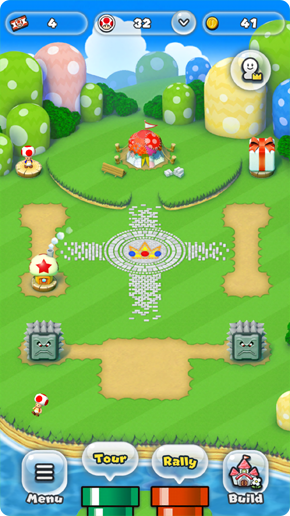Super Mario Run is Nintendo’s first fully-fledged venture into the world of mobile gaming, which is a substratum of the video game industry plagued with low-value knock-offs, the dreaded microtransaction and other wastes of time and data. The mobile gaming market is often considered one of lowered expectations, the place you go for casual and instant gratification while waiting to do something that’s actually fulfilling.
But Super Mario Run was intended to be something else from the start, a premium product for Nintendo’s flagship IP. Creative mastermind Shigeru Miyamoto worked on the game himself, ensuring a challenging experience for veteran players while maintaining the engagement of younger or more casual players. Nintendo has always been upfront about the game’s price: free to try out for three levels and $10 to unlock the full game. They’ve also been upfront about their inspiration and hope for the project.
However, some players are furious that the game costs $10, review bombing Super Mario Run in the App Store. The question is: why? Why are these folks so primed to expect and demand free stuff, even from reputable companies stacked with some of the most talented video game makers in the world?
Shigeru Miyamoto does not work for free. Nintendo does not work for free. A thoughtfully-constructed game developed especially to provide a premium, entertaining experience on a specific device should not be available for free. You value what you pay for. Nintendo is perfectly right to charge for Super Mario Run .
But it’s even better: not only do you get to try Super Mario Run out for three levels, which is more than enough time to determine whether or not you enjoy the gameplay mechanics and overall feel of the game, you are only charged once. One single time! Levels aren’t hidden behind paywalls. Characters aren’t hidden behind paywalls. Special consumables aren’t hidden behind paywalls.
Anyone who games on their mobile phone has run into frustrating and annoying paywalls. They inevitably detract from the game you’re trying to play. They are miserable and intrusive. But without forking over your dough, over and over and over again, it will take you hours and hours and hours more to play the same game that a whale can breeze through. It’s one of the factors that gives mobile gaming a bad rep.
Other games have tried without success to implement the premium price model. If we’re lucky, Nintendo’s Super Mario Run will set a wildly successful trend. If we’re really lucky, microtransactions will seem like the transparent cheap cash grabs they really are -- and not merely derided, but actively avoided by consumers in favor of games that are upfront about their costs. And if we’re incredibly lucky, we’ll get Super Mario Run on Android soon.
Do you agree that Super Mario Run is worth the $10 price? Do you love microtransactions? Are you happy with the state of the mobile gaming industry? Feel free to let us know in the comments section below.














![[EG April 19] Best 'Stardew Valley' Mods That Will Change](https://d.player.one/en/full/226012/eg-april-19-best-stardew-valley-mods-that-will-change.png?w=380&h=275&f=955520b8313253ee3c39c791f6210f38)



